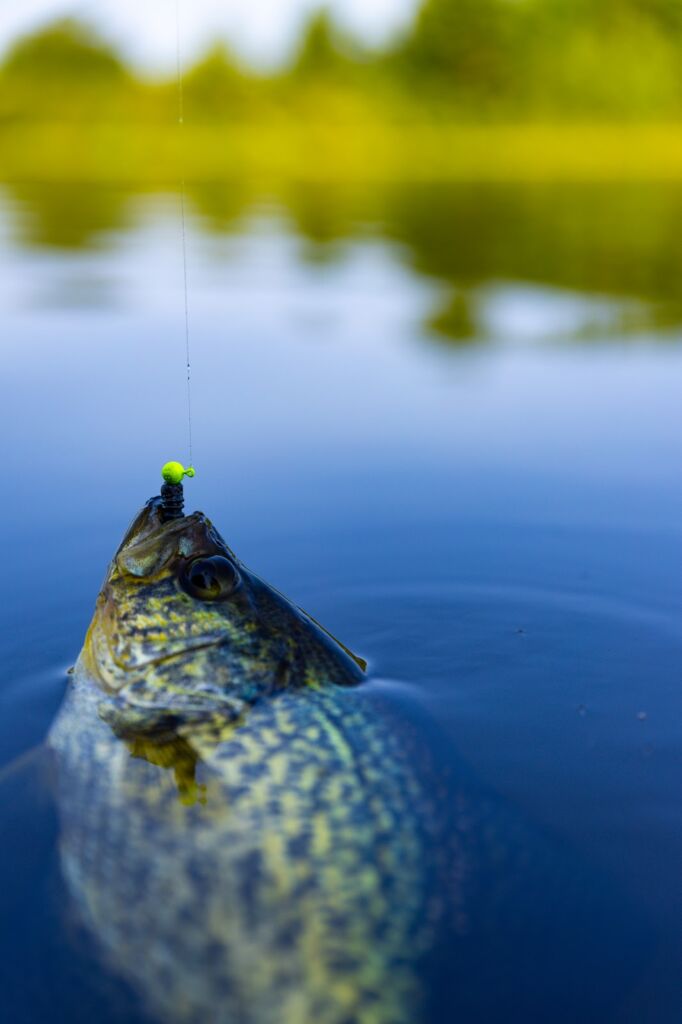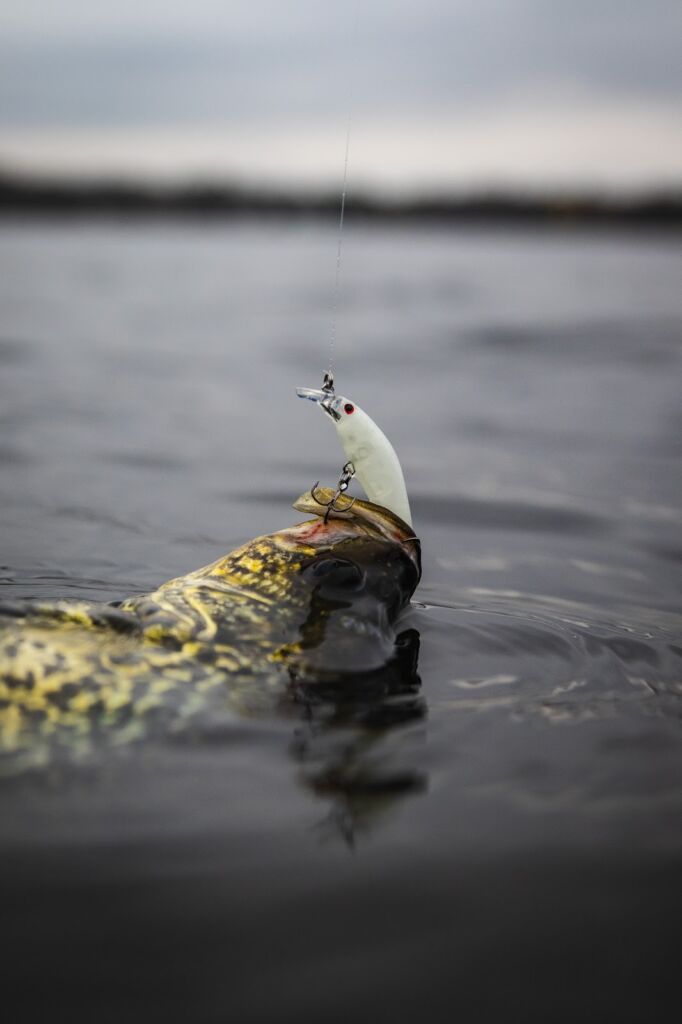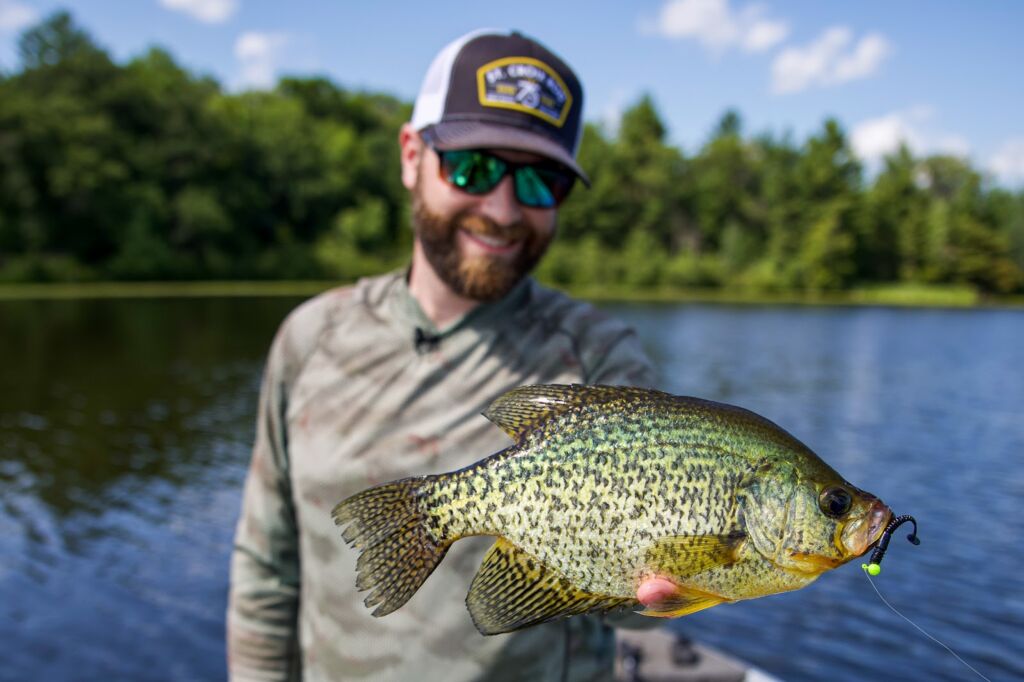Summer Crappie Craze: Strategies for Finding and Catching Slabs
While bass are the nation’s most popular fish species, panfish, and crappies in particular, also find themselves high on the priority level for many anglers – and for good reason. Not only do they make great table fare, they also provide fast paced action. Crappies are found across the United States and inhabit a variety of water body types – including lakes, rivers, and flowages.
In the Midwest, crappies are popular targets during certain times of the year – like spring and winter. In fact, for many anglers in the spring these fish are the are the top target. Springtime crappies pile into the shallows – closely followed by drones of fishermen.
As the season progresses and game fish seasons open, the assembly of crappie fisherman quickly transition their efforts towards the toothier varieties of fish species. Surprisingly, this can be a big mistake, as productive days during the summer months can often yield much higher catch rates than those in the spring.
The Where
One of the most common questions regarding summertime crappies revolves around location. In all honestly, they likely aren’t too far from where they were in the spring. Start the search near the areas they were located during the spawn – which includes shallow, warmwater bays, often with some sort of vegetation. The main difference – they’re more likely to be spread out across a wider portion of the lake. Day in and day out, lush, healthy vegetation adjacent to those spawning areas will typically have the highest productivity.

If you have no idea where they spawned, begin your search at the nearest healthy weed line. Depending on the body of water, certain vegetation types will be more productive than others. In this part of the country, cabbage and coontail, in that order, are the ideal weed types. That being said, there are plenty of bodies of water where these varieties aren’t found in dense concentrations.
In these types of situations, something as simple as lily pads can provide a sense of security for crappies. Throughout the summer months, schools of crappies typically concentrate themselves along weed edges, as well as pockets and holes in the weedy cover. In certain situations, fish will push further into the weeds and in others, push out away from the edges, but often remain relatively close to the edge.
As the season progresses, crappies will also inhabit other areas – commonly in slightly deeper water. One of the more untapped summer bites exists the areas of nothingness throughout a lake. Expansive flats that share a resemblance to a barren wasteland are some of the best areas to locate packs of roaming crappies.
Generally, these areas are found within a reasonable proximity to key weed lines, but in terms of cover offer nothing of visible importance. The best way to describe these areas is the ‘in-between’ areas as they’re often found between the shallow cover and main lake basins – often times in the 15-20 FOW range. Fish in these areas can be harder to find, but, in my experience, they’re typically aggressive and willing to eat.
Woody cover – such as man-made cribs or submerged timber – is also a safe bet throughout the summer months. They can act as crappie magnet regardless of the time of year, but they really tend to concentrate fish towards the tail end of the summer.
In many lakes, it’s not uncommon to find fish cribs throughout the featureless areas of a lake described above. During the latest part of the summer months, a good portion of fish will make the move to basin areas – think areas you’d check at early ice. While not all the fish have made the move, it’s not uncommon to find some fairly large schools.
The What
During this warmwater period, artificial lures will outproduce live bait in almost every scenario. Crappies are often at peak activity levels, so artificial presentations are the way to go – including both soft lures and hard baits.
Paddletails, grubs, and tubes are among the top choices for summertime slabs. If an angler was forced to rely on just one lure, a 2-inch swimbait, like the Eurotackle B-Vibe, would be hard to beat. The main reason: their versatility. These small swimbaits can be fished anywhere in the water column simply by adjusting retrieval speed or weight.
Rigging plastics on a 1/32 to 1/8 oz jig head will cover almost all fishing conditions, with jigs in 1/16 oz class being the most versatile. Opt for lighter options in shallower situations or if there’s the likelihood to encounter thick weeds.
Hardbaits also have their place during the summer months. A less common, but ultra-effective presentation for weed oriented fish involves micro jerkbaits. This bait category is certainly somewhat popular during the pre-spawn period, but it’s not used often enough in the summer months.
Most small jerkbaits are designed to dive just a few feet, so they are perfect for working over the tops of weed flats. Remember to pause on the retrieve — that’s usually when fish will bite. Micro crankbaits are also a great choice for covering water, especially when fishing weed edges.

When it comes to panfish rods, the choices are plentiful. Long gone are the days of whippy, noodle-like panfish rods. Many manufacturers have developed high end panfish rods with fast to extra fast action rods which allow anglers to precisely work light lures, make quick hook sets, and feel the lightest of bites. For most scenarios a crappie angler will encounter, a 7-foot, Light Power, Extra Fast Action rod is hard to beat. The versatility of this type of rod allows an angler to fish lures from 1/64 to 1/8 oz via a wide spectrum of techniques.
Rods of this type should be paired up with an appropriately sized reel, which in most situations is a 750-1000 series reel. Lines in the four-to-six-pound class are preferred depending on the specific application. High visibility microbraids are advantageous for summertime crappies. They increase the overall sensitivity of the setup and allow anglers to watch line movements to detect fish before a bite is even felt. Braid presentations are best paired with a light fluorocarbon leader.

The How
Summertime slabs are best located via a few key techniques, namely casting, trolling, and vertical jigging. Each technique excels in different situations.
Casting is arguably the best choice for tracking down summertime crappies. In these scenarios, soft plastic swimbaits are king as they make great search baits. On the initial casts, start reeling as soon as the lure hits the water. After a few casts let the lure sink a little before reeling. This method can help pinpoint the depths at which the fish are located. If you start getting bit, anchor up or spot lock, as there are likely more fish nearby. If you aren’t finding fish, keep moving.
Trolling patterns are most efficient for locating scattered fish – and work well for weed line-oriented fish, as well as suspended fish. Trolling speeds vary depending on the situation and conditions, but typically occur between 0.75 to 2.0 mph. Micro crankbaits, lipless crankbaits, and soft plastics can be used via this method.
For weed-oriented fish, do you best to follow the edges of the weeds. It’s sometimes necessary to move on top of the weeds, so pay attention to which speeds keep your lure just out of the weeds. Making sure you have enough distance between the boat and lure is imperative —sometimes being too close results in far less fish.
Vertical jigging typically doesn’t come into play until fish make the move to deeper water or when they’re in woody cover. Crappies relying on woody cover, like cribs, often hold tight to the source, so vertical methods are among the most effective. Smaller open water plastics and ice plastics are ideal presentations for these situations.
Regardless of how you target summertime crappies, don’t be surprised if you find a rogue largemouth, pike, or walleye in your ventures, as they also tend to roam these same areas. They are plentiful, provide fast paced action, and are found across a wide variety of water types.








